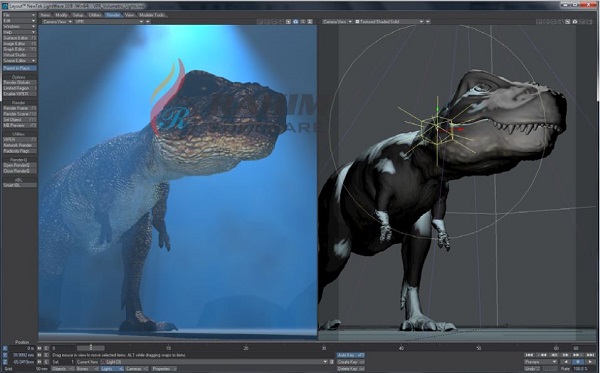
Note the increase in rendering time as the radiosity sample array increases. The time to render each image is noted next to the sample setting label (xxmxxs). To save time, only one bounce was calculated (i.e., the dark underside of the cube is not indirectly illuminated by light bouncing off of the floor, as it would be in "real life").įigure 1 represents a comparison of 4 different Monte Carlo radiosity sample settings: 1x3, 2圆, 3x9 and 4x12 and their NI filtered post-processed counterparts. The scene contains a diffuse cube (matte), a glossy toroid (shiny plastic) and a specular reflective sphere (chrome) with a slightly reflective floor.

Here are some sample renderings using a simple scene with a HDR image - the ubiquitous "Uffizi" light probe image from

Blender, an open-source 3D modeling and rendering app, is integrated with a Python API and plug-in environment. Lightwave is scriptable, but I am not really familiar with scripting it. Of course, how NI fits into the overall workflow of 3D artists is another story. I'll play with it and see how it works and post the results of my non-scientific study here. NI seems like a time saver in that you may be able to meet the above compromise half way, by reducing noise (number of samples per pixel) and smoothing edges (sort of like anti-aliasing) in NI without eliminating high-frequency detail - essentially permitting you to decrease BOTH the number of passes AND number of samples per pixel in LW and then post-process in NI. So ultimately you have to find that balance between radiosity samples per pixel and anti-aliasing passes. Increasing the number of passes (i.e., selecting higher quality anti-aliasing) is a brute force way of permitting a smaller radiosity array per pixel due to the "random" nature of the sampling. For example, if you choose Lightwave's "Low" anti-aliasing, the renderer performs 5 passes, applying the shading noise filter after each of the 5 passes. It is applied at the end of each render pass.

Lightwave has a "shading noise" check box that you can select to help reduce the noise associated with global illumination techniques. Even if you let the renderer chug for hours, you still can end up with artifact. As far as rendering time, it depends on a number of factors.


 0 kommentar(er)
0 kommentar(er)
